Women Have Always Been ‘IT Geeks,’ Yet FinTech Still Lags on Diversity

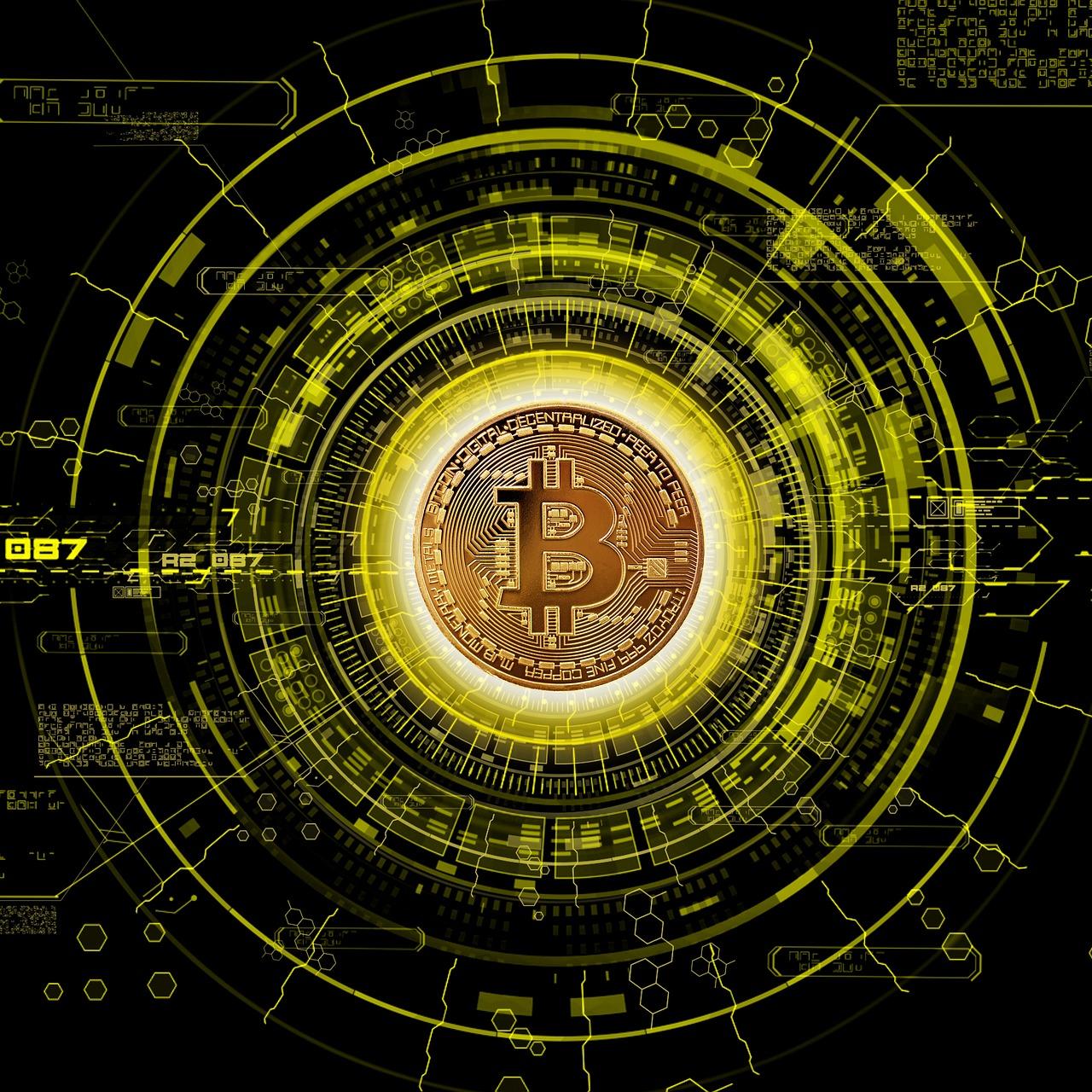
Not unlike other industries, the information technology (IT) field is stil male-dominated, and one doesn’t have look far to see the disparities when looking at the demographic makeup of IT geeks worldwide. Going by the industry statistics, things are beginning to change, but it’s happening slowly.
Women executives within the IT sphere still make up a very small percentage. At global Fortune 500 companies, their representation in recent years has hovered around the 13 percent mark (65 companies) for roles like chief information officer and chief security officer.
Women in IT leadership: much work ahead
“There’s absolutely further to go with regard to women in leadership positions,” particularly in tech, says Danielle Zimmerman, VP of the builder community at Quick Base Inc., a former Intuit division. But she feels the winds beginning to change.
“Traditionally, women have been less likely to be technologists than their male counterparts, but the future of work is challenging the status quo by breaking down hierarchical silos and decentralizing organizational structures,” she continued.
As the head of Quick Base’s builder community — which caters to no-code and low-code platform developers, who tend have less experience — Zimmerman has a unique vantage point from which to assess how things are changing. Today, 46 percent of builders within the Quick Base community are women - “indicating that women encompass nearly the same percentage of no code/low code application developers as those in the workforce,” Zimmerman said.
Further, as the future science, technology, engineering and math (STEM) pipeline diversifies — read: more young women entering these fields and yes, becoming proud IT geeks — the very nature of work itself is also changing, which can serve to open doors further, Zimmerman observed.
“In the future working environment, employees across business units — at every professional level and at companies across every imaginable vertical or sector — can identify as a technologist, which will open up more opportunities for women,” she said. “But we still have work to do regarding promoting more women to leadership positions and breaking the glass ceiling on boards.”
A snapshot of IT geeks: representation lags in the blockchain and crypto scene
“Recent statistics …. showed that women account for 14.5 percent of staff in blockchain companies,” Evelina Lavrova, founder of the marketing agency DeCrypto PR, said at a blockchain event in Zug, Switzerland, last year.
This alone sounds pretty dismal, but it actually gets worse when it comes to representation in technology roles. “Actually about 80 to 90 percent of team members in tech companies are men, because the majority of employees are developers. Other functions in these companies — marketing, PR, human resources, finance specialists and lawyers — one typically finds women in these posts,” Lavrova observed.
Research from Longhash, a women-founded platform for accelerating the development and understanding of blockchain technology, bears this out. And the situation was even more unbalanced when it came to leadership roles in the blockchain industry: Just 7 percent of blockchain executives and 8 percent of advisors are women, according to their research. And 78 of 100 startups the firm examined in the space had not one single female executive.
“If we look at past surveys and research on the global sphere for blockchain, which was undertaken by eToro in early 2018, this indicates that blockchain is experiencing a major gender divide, with 8.5 percent of cryptocurrency users being female,” said Elena Gutsu, a female director of the Digital and Distributed Technology Moldova Association.
According to Google Analytics, 91 percent of people involved with the Bitcoin space are men. Another survey conducted by Quartz found that of 378 crypto startups founded between 2012 and 2018, only 8.5 percent had a woman as a founder or co-founder.
“This lack of gender diversity is also evident at blockchain-related events I’ve attended,” Gutsu noted. Indeed, The New York Times reported in 2018 that the North American Bitcoin Conference in Miami had 84 male speakers but just three women. The latter was upped by two more women to placate an outraged public, from only one originally.
Surely, the slow progress is disappointing. But multi-stakeholder groups — many headed by women — are beginning to push for change, Lavrova said: “Many organizations, such as the Women in Blockchain Foundation, are now providing support.”
And with the blockchain and crypto space often referred to as the “Wild West,” which Gutsu describes as “a place for strong and brave men,” she has a call to action for young women everywhere: “Girls, be brave, hurry up and step into this very challenging world! Otherwise, the men are going to get all the wealth!”
Image credit: Pixabay
Not Just for Sushi: Seaweed is the Magic Ingredient for This Sustainable Packaging Startup
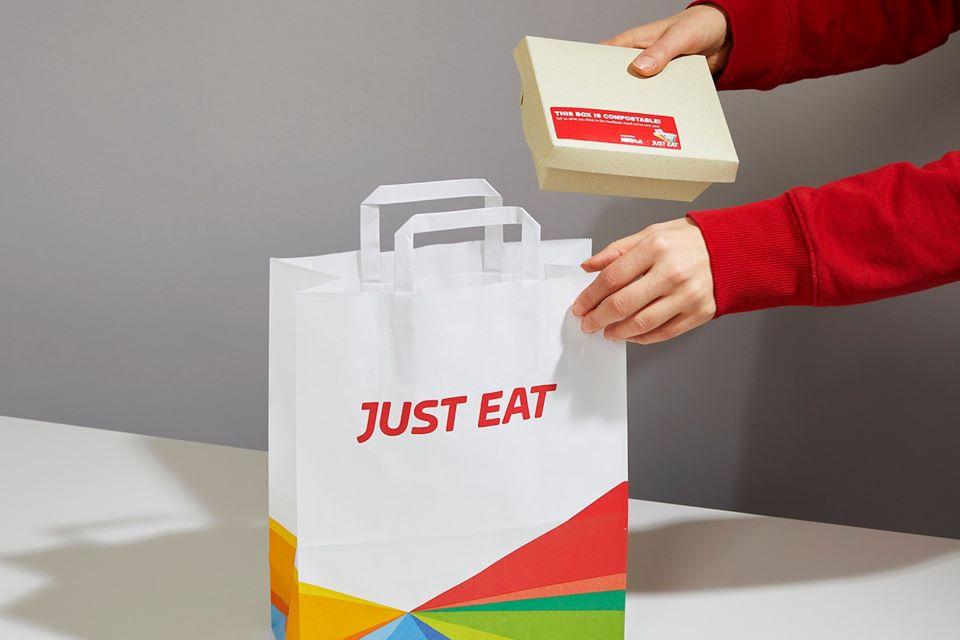

European online food order and delivery service Just Eat is testing a seaweed-lined takeout box in partnership with sustainable packaging startup Notpla. The box is recyclable and, according to Notpla, degrades within four weeks in a home compost pile.
This sustainable packaging uses seaweed to keep food fresh
The Notpla box is the first of the company’s products include a food liner made of seaweed and plant extracts, which makes the box greaseproof and water-resistant. Most paper takeout boxes contain synthetic chemicals, but Notpla says it sources paperboard that is free any such additives. The paperboard also contains grass in its pulp, which results in fewer lifecycle emissions and reduced water consumption when compared to conventional paperboard.
According to the company, production of the Notpla box prevents 550 pounds (250 kilograms) of carbon emissions and over 790 gallons (3,000 liters) of water per metric ton of carton board when compared to conventionally manufactured carton board.
Just Eat, which started in a Danish basement in 2001 and is now doing business in 12 countries, launched an initial trial of the boxes with three of its restaurant partners in London. The company says the trial alone will prevent about 3,600 plastic boxes from entering the waste stream. And when it's over, Just Eat will assess whether it is feasible to roll out the box to the company’s restaurant partners across the U.K. and other Just Eat markets.
“We’re delighted to bring this new takeaway box to trial and look forward to assessing the results with the aim to roll these boxes out across the U.K. and our other markets so that customers across the globe can enjoy their favorite takeaways more sustainably,” Andrew Kenny, Just Eat U.K. managing director, said in a statement.
“The takeaway food industry creates a mountain of waste and plastic pollution every year, so we welcome Just Eat's efforts in trying to improve the situation,” added Friends of the Earth’s Tony Bosworth.
Condiment sachets made from seaweed could be an alternative to plastic
The takeout box is the second collaboration between Just Eat and Notpla. Last summer, when the startup was going by the name Skipping Rocks Lab, it tested seaweed-based sauce sachets at The Fat Pizza, one of Just Eat's restaurant partners.
Companies can use the sachets to package sauces, salad dressings and condiments for takeaway. They're fully compostable and, according to Notpla, decompose within six weeks.
The six-week trial at The Fat Pizza in Essex assessed how feasible it would be to roll out the sachets more broadly across Just Eat’s restaurant network. A few months later, it launched another trial of the compostable sachets, with Unilever’s Hellmann’s mayonnaise brand among its partners. Just Eat said the trial prevented over 46,000 plastic sachets from entering customer homes and, thereby, municipal waste streams.
Plant-based sustainable packaging can prevent waste ending up in landfills
What makes Just Eat’s partnerships so groundbreaking is that most takeout containers labeled as “compostable” are made from bioplastic. These containers are not recyclable, and they can only break down in industrial-scale anaerobic digesters, not home compost piles. As a result, consumers have almost no options for disposal except the trash bin.
Since consumers have no option to dispose of most takeout containers, is there any reason why they should frequent restaurants and food delivery companies in the first place? Consumers have already made it clear they're looking for more sustainable and responsible food choices. Many are asking for plastic-free packaging to go along with it, and some say they'd like to see unnecessary packaging eliminated entirely. The evidence suggests more companies are responding in kind, but there is plenty of work that still needs to be done.
In the meantime, although bioplastic is more challenging to dispose of, it still carries benefits. Good Start Packaging, which creates compostable containers, offers several, including what it calls upstream benefits. First, compostable containers come from more renewable sources such as corn, sugarcane or paper instead of fossil fuels. As these containers come from plant-based resources, they generally do not contain potentially toxic chemicals used in many traditional plastics, such as styrene and benzene.
The manufacturing of these compostable and plant-based containers also consumes less energy than conventional plastic options. For example, polylactic acid (PLA), the bioplastic that is a base for clear containers and liners for coffee cups, uses 68 percent less energy than conventional plastic.
The downside to conventional compostable food containers and cutlery is that most of it ends up in a landfill and still requires much time to break down. The clear sustainable alternative to those types of containers are reusable options, say advocates like Clean Water Action, which claims “reuse is far superior to recycling.”
Image credit: Notpla/Facebook
The Rise of Flexitarians: Plant-Based Foods Top GrubHub's List of Delivery Favorites

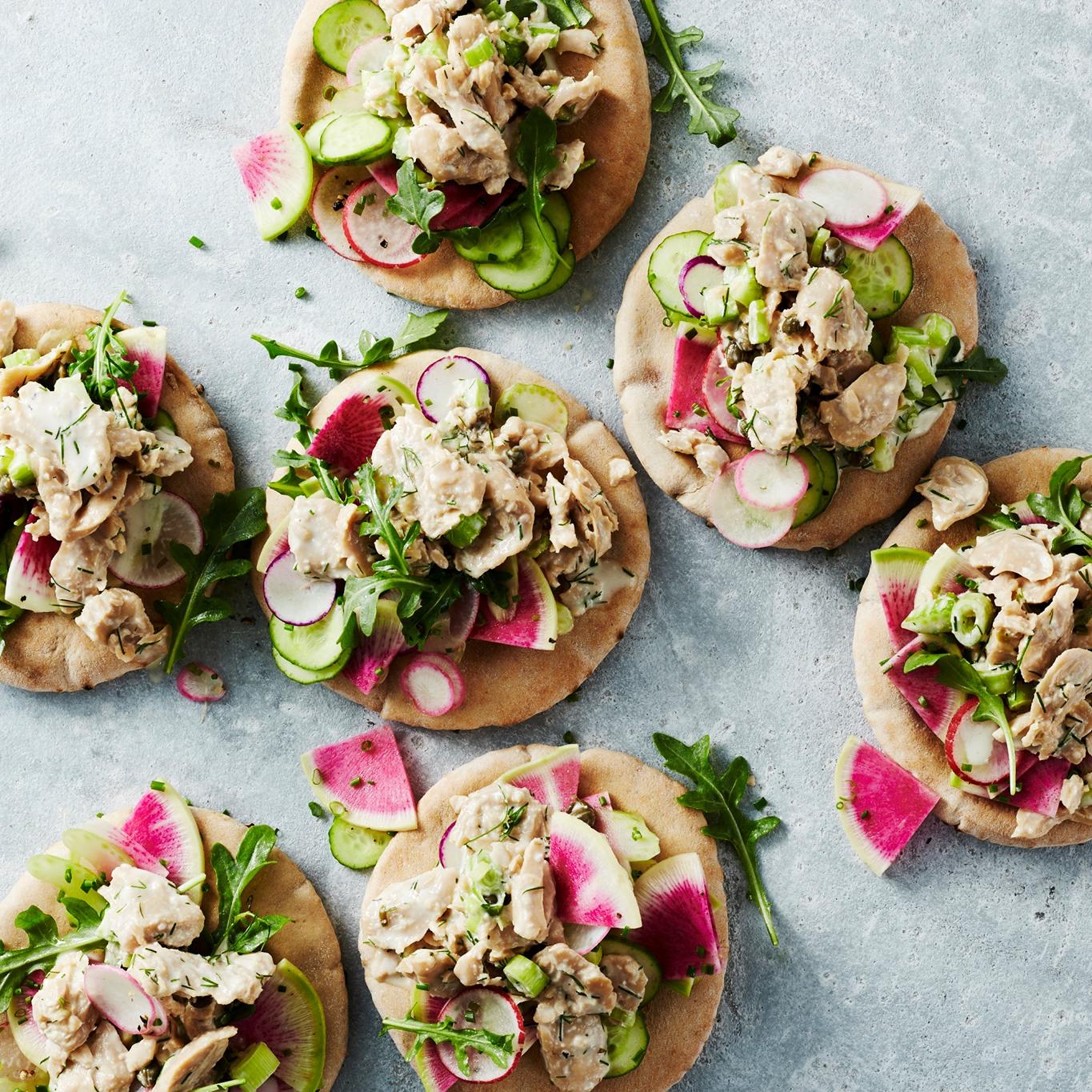
Plant-based foods are here to stay, if GrubHub's latest Year in Food report is any indication. Seven of the top 10 orders placed on GrubHub in 2019 were vegetarian-friendly, compared to just three the year before. The Impossible Burger joined the late-night delivery top five list, while pizza with a cauliflower-based crust was ranked the top order of the year. So, what does GrubHub’s report tell us about the plant-based food movement at large?
The popularity of plant-based foods can be traced to the rise of flexitarians, people who eat mostly vegetarian but occasionally eat meat and other animal products. While the vast majority of Americans don’t identify as vegans or vegetarians — the percentage of vegetarians was the same in 2018 as it was in 2012, according to Gallup polling — most are willing to try plant-based foods and eat less meat.
As of May 2019, 1 in 5 Americans identified as flexitarian. Around 13 percent of Generation Z and 10 percent of Generation X eat flexitarian diets, compared to just 6 percent of baby boomers, according another 2019 report.
One of the most well-known plant-based protein companies, Impossible Foods, has noted that most of its consumers are flexitarians. More than 90 percent of Impossible Foods consumers eat meat at least once per month, the company estimates in its latest impact report.
Curiosity and taste are behind the shift to plant-based foods
The top motivators for the majority of consumers to eat plant-based foods are curiosity and a perceived improved flavor, according to a recent survey. Approximately 30 percent of respondents said they had heard a lot about plant-based foods and were curious about them, while 41 percent said they liked to try new foods in general.
Burger King’s Impossible Whopper taste-test advertisement demonstrates how flavor is a must for encouraging non-vegetarians to choose a plant-based burger or entree. In the final words of the advertisement, a customer states, “I’m reevaluating my life,” after discovering his favorite Whopper is made from plants. Messaging like this hits home how taste is critical in growing the number of people open to trying a flexitarian diet.
“While the novelty of a plant-based item may drive trial, if it’s not 'craveable,' it will not drive a repeat purchase," observed Food Navigator USA correspondent Mary Ellen Shoup.
Health and environmental concerns turn more consumers away from meat
Concerns over health and environmental challenges also motivate consumers to pursue plant-based options. About 9 in 10 Americans say their health is why they purchase plant-based foods, while 64 percent do so to help reduce global warming, according to one Yale University report.
Plant-based ethics now extend to plant-based environmentalism. This macro force is leading companies to differentiate based on sustainability promises. Panera Bread, for example, announced its menu will be 50 percent plant-based by December 2020, citing its customers’ growing awareness around their diets and its link to climate change.
And this transformation isn’t just about swapping beef burgers for plant-based ones. For example, Bumble Bee Foods will offer a plant-based fish option in partnership with Good Catch, a company that makes plant-based alternatives to seafood, in order to appeal to people shifting to fish alternatives as they strive to reduce their environmental impact.
“The new decade ushers in consumers eager to benefit their own health and the health of the planet, looking for a diverse range of planet-friendly choices,” wrote Rachel Hommel of New Hope Network. “And luckily, plant-based products finally taste great.”
Image credit: Good Catch Foods/Facebook
Rousing the Real Estate Sector to Anticipate and Manage Climate Change Risk


Take note, owners and operators of the nation’s 120 million residential, commercial and industrial buildings: It’s time to wake up to the impending climate crisis and to anticipate and manage climate change risk to your buildings, and their inhabitants.
Or else, you’re likely to face destructive consequences – especially if your buildings are in flood plains, exposed coastal settings are seismic zones.
Sure, it’s a common response to practically any perceived risk to delay taking precautions and actions until visible signs emerge. But those climate-related danger signals are becoming more real almost daily.
Consider recent warnings about climate change risk
A new report by U.S. national security, military and intelligence professionals warns that future climate change risk “presents high-to-catastrophic security threat.”
The World Economic Forum global risk perception report this year determined that the climate crisis dominates the top five risks for all stakeholders.
Global investment banker BlackRock’s CEO Larry Fink, in his influential annual letter to CEOs, warns that companies that don’t assess and address climate risk will not be part of the investing giant’s portfolio.
McKinsey’s recent climate risk and response report on physical hazards and socioeconomic impacts report is groundbreaking and is a must-read. The consulting firm, known for its greenhouse gas mitigation curve, now assumes that higher global temperatures are being triggered by business-as-usual greenhouse gas emissions and, for the first time, urges businesses to focus on climate adaptation.
Stakeholders in the real estate sector must look beyond their buildings
Fortunately, for business owners and operators struggling to wrap their heads around climate change risk, help is at hand: The Disaster Resilience Scorecard for Industrial and Commercial Buildings. The scorecard was developed by real estate investors, developers, architects, engineers, government professionals and community leaders increasingly concerned about the physical impact of climate change on their built assets. It seeks to motivate building owners and operators to take action to increase building resilience.
The scorecard also is intended as an analysis of overall building resilience by looking beyond issues that are in the immediate control of the building. These include transportation, water and energy infrastructure as well as local policy. And, if provides a “resilience agenda” of sorts for when building owners and operations hold discussions with city planners and investors.
The scorecard — developed by ARISE, the Private Sector Alliance for Disaster Resilient Societies that is a global network led by the U.N. Office for Disaster Risk Reduction — includes 10 “essentials.” These essentials include measures to plan for resilience, measuring future risk scenarios and effective disaster response plans.
The scorecard can be used as a tool in exploratory workshops with stakeholders including building tenants, community representatives, city planners, emergency managers and representatives of the owner or manager. As Peter Williams, the scorecard’s lead author and formerly of IBM, sees it: “With existing buildings, improving resilience may require retrofitting existing structures and processes but ‘build to last’ should be the objective.”
In sum, here’s the memo for the global real estate sector: this scorecard is an excellent vehicle for the action each of us needs to lead as we do our part to take on climate change risks.
Image credit: Andrea Piacquadio/Pexels
Department of Defense Issues Artificial Intelligence Principles: Now Comes the Hard Part

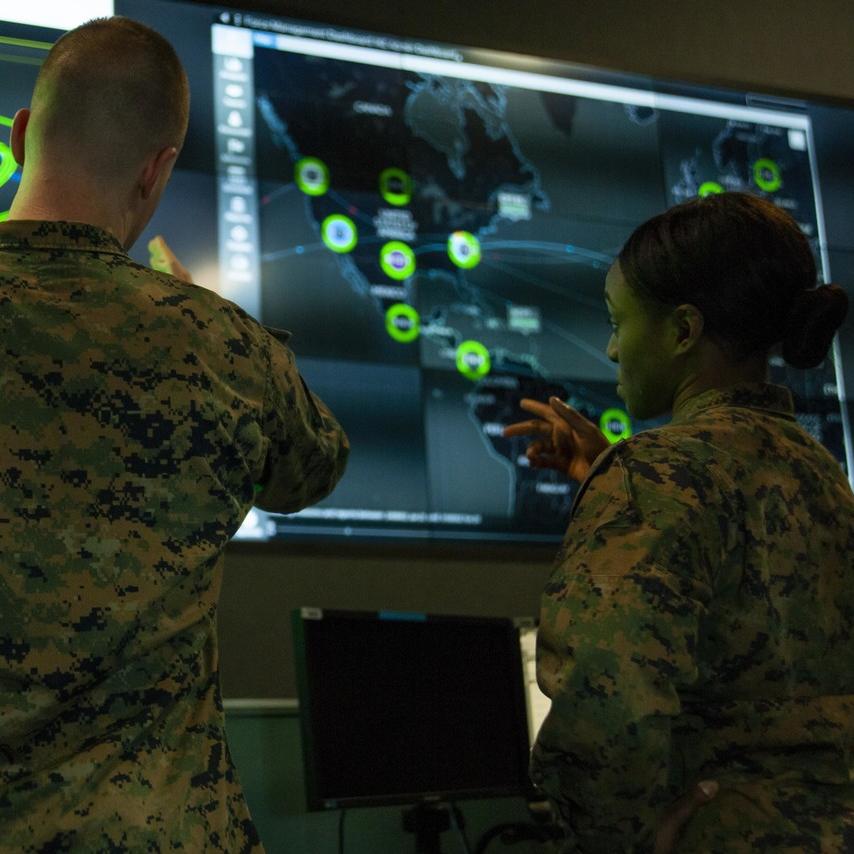
Tech giants have been wrestling with the tension between privacy rights and the U.S. Department of Defense’s use of artificial intelligence, particularly in regard to the department's notorious Project Maven imaging initiative. The issue has spilled over into areas of employee relations and brand reputation, too.
The department finally issued a set of ethical principles for AI last month, but it remains to be seen if the new guidelines provide reassurance for tech companies, their employees and their customers.
The Department of Defense and artificial intelligence
DoD released its new ethical guidelines last month, without much notice from the media outside of defense specialty publications.
The quiet reception was a bit surprising, considering the attention revolving around tech giants, AI, DoD and privacy rights over the past two years.
One reason for the media silence could be that ethical principles for AI are, in some ways, the least of DoD’s worries right now. Last year, Rand Corp. issued an absolutely scathing analysis of the current state of artificial intelligence use in the Defense Department and found a series of critical shortcomings.
The authors of the report did not mince words. In a summary, they wrote that DoD’s use of data and AI training was “fragile, artisanal and …optimized for commercial rather than DoD uses.” They also found that validation and testing procedures were “nowhere close to ensuring the performance and safety of AI applications" and that “DoD's posture in AI is significantly challenged across all dimensions.”
Among the items in a long list of deep, systematic faults, the authors noted that the agency’s newly established Joint Artificial Intelligence Center (JAIC) “lacks visibility and authorities to carry out its present role.”
“It also lacks a five-year strategic road map, and a precise objective allowing it to formulate one,” the authors concluded.
An ethical solution to systematic problems
In this context, the Defense Department’s newly articulated ethical principles simply paper over a much deeper problem.
Nevertheless, they do establish at least a minimal layer of order and predictability that is fairly consistent with corporate social responsibility principles. The new principles also rely on longstanding guideposts including the Constitution, the Law of War and various international treaties.
DoD divides the series of 12 new guidelines among five areas. Three involve the personal responsibility of DoD employees over artificial intelligence systems, in terms of exercising appropriate judgement, minimizing unintended bias, and focusing on accountability and transparency regarding data collection, methods and sources.
A fourth focus area commits DoD to deploy only AI systems with specifically defined functions that are tested and assured throughout their lifecycle. The department also committed to fail-safe systems aimed at preventing machines from running amok.
“The Department will design and engineer AI capabilities to fulfill their intended functions,” the summary states, “While possessing the ability to detect and avoid unintended consequences, and the ability to disengage or deactivate deployed systems that demonstrate unintended behavior.”
Who is steering the AI ship?
That’s a good start, but bare-bones guidelines may not be enough to reassure tech hardware companies like Apple, which need to reassure consumers that their personal devices protect their privacy.
A deeper dive into the issue reveals additional cause for caution. The guidelines were developed through the Defense Innovation Board (DIB) following a series of public meetings and listening sessions last year.
The 16-member DIB launched during the Barack Obama administration as a means of connecting the Defense Department with academia and entrepreneurs. It is chaired by Eric Schmidt, the former chair of Google and Alphabet whose company (he is currently a technical advisor to Alphabet) has found itself clashing with the Donald Trump administration over human rights issues. Google's vice president for wireless services also represents the company on the board.
That tension appears to indicate the DIB is politically neutral. However, there is a potential conflict regarding at least one other corporate member, Microsoft.
Last year, Microsoft beat Amazon out for the Defense Department’s massive JEDI cloud computing contract. Amazon does not have a DIB seat, which is not surprising in consideration of the ongoing feud between President Trump and Amazon CEO Jeff Bezos.
Another factor to consider is the newly formed American AI Initiative, which launched last year under an executive order. The new initiative is a “concerted effort to promote and protect national AI technology and innovation,” with action items like "remove barriers to AI innovation" and "train an AI-ready workforce."
Compared to this enthusiastic, aggressive pursuit of AI, the ethical principles recommended by the Defense Innovation Board seem like pretty weak tea.
In that regard, it is interesting to note that one person instrumental in promoting the American AI Initiative is Michael Kratsios, the Trump administration’s chief technology officer.
Kratsios is among several administration figures with ties to the leading government contractor Palantir, a company that has become notorious for the use of its machine learning and AI technology in enforcing U.S. immigration policy.
The takeaway: Tech companies may be wise not to take ethical assurances from DIB as a green light, and instead carefully consider employee and consumer concerns before moving forward on artificial intelligence contracts with the Department of Defense.
Image credits: Department of Defense
Tree-Planting For Climate Action: Good on Paper, Countless Questions in Practice
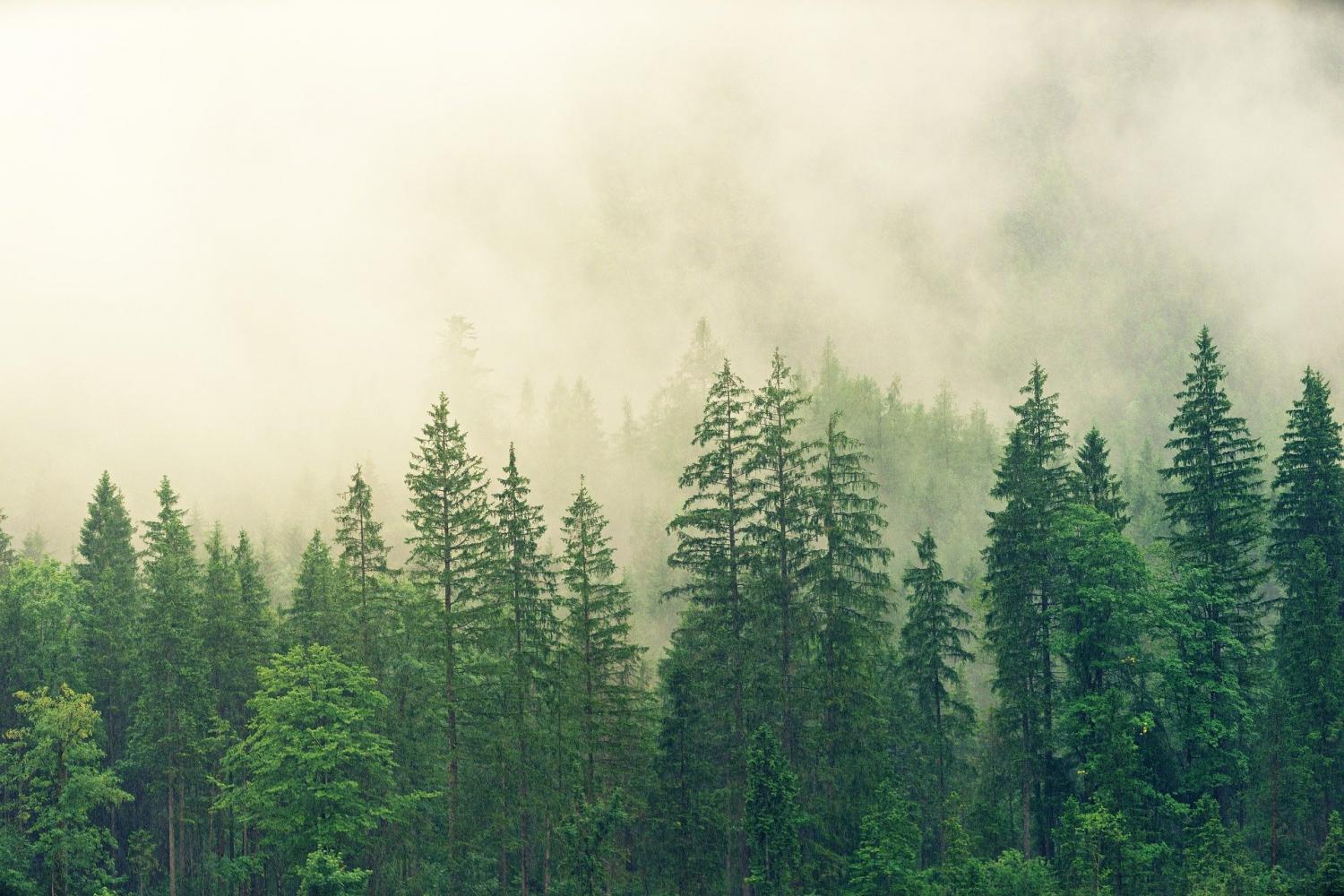

Companies looking for a high-impact path forward on climate action are beginning to coalesce around tree-planting to offset their carbon emissions. That's a good place to start, but a massive number of trees are needed to make a dent in the climate crisis.
Unfortunately, the enormity of the required scale leaves the door open for the law of unintended consequences to kick in. Without careful planning, tree-planting initiatives could expose corporate sponsors to new reputational risks and won't necessarily help them meet their climate goals.
Questions over landmark tree-planting study surface
Tree-planting is a relatively common carbon offset activity, but to date it has been practiced on a modest scale. The idea of scaling up gained traction in July after a research group at Switzerland’s ETH Zürich University published an analysis of the climate mitigation potential for planting billions of trees on an area equivalent in size to the U.S.
On its surface, tree-planting on a massive scale seems like a simple and effective strategy for absorbing excess carbon and making good on climate action goals — and it is, at least on paper.
The study received a widespread and enthusiastic response in the media. However, last fall questions emerged over the amount of land actually available for planting new trees.
One key criticism was the study’s lack of consideration for populated areas, calculating that 2.5 billion people already live in areas considered for reforestation. Those areas include pasture lands, settlements and whole villages, as well as larger population centers.
Red flags over tree-planting in India
Signs of trouble ahead are already in evidence. Last month, for example, Reuters reported that an ambitious tree-planting and wildlife conservation initiative in India has raised social and economic justice issues, due to its impact on indigenous people and villagers living in poverty.
Among the stories tracked by the New Delhi organization Land Conflict Watch is the use of India’s Compensatory Afforestation Fund to locate new tree plantations without considering the needs and livelihood of the current occupants of the land.
The truth: Tree-planting takes effort
Companies looking for a “safe” carbon offset can avoid reputational risk by carefully screening tree projects for their potential to displace people and their livelihoods.
Even if that element is not in play, however, tree-planting is not a simple matter of dropping saplings into the ground.
While the Zürich University study provides food for thought, critics argue it deploys standards that are unsuitable for picking locations where planting new trees is environmentally feasible.
For example, the study used average temperatures as a benchmark, while failing to take temperature extremes into account. It also failed to consider soil conditions, including erosion and other degradation, that would make it difficult, if not impossible, for a healthy forest to take hold.
Preserving the current stock of forests
Companies that embark on tree-planting initiatives also need to consider their own role in deforestation, or they risk being targeted with the greenwashing label. That includes influencing their supply chains to preserve currently forested areas.
The issue of deforestation was underscored last month when the United Kingdom-based organization Global Canopy released its sixth annual Forest 500 report on companies that wield the greatest influence over the world’s forests.
The report notes that voluntary action by corporations can be more effective than legislation, especially in countries where government policy is lax. More companies appear to be getting the message. Although 140 of the companies listed in the report have no commitment against deforestation, 86 others are setting a high bar.
The number of commitments is growing. According to the report, 25 companies introduced new commitments for specific commodities last year, including Glencore, Schwarz Group (the owner of the massive German discount grocer Lidl), and Restaurant Brands International (the owner of Burger King and Tim Hortons).
The report especially draws attention to Tyson Foods. The company had no deforestation policy until 2019, when it announced a partnership with Proforest and Global Canopy to undertake a deforestation risk assessment as a precursor to setting policies for its supply chain.
Carbon offsets, climate action and tree-planting
One final note of caution is in order for companies seeking a boost in their reputation from tree-planting: Foremost is the need for follow-up and third-party verification to ensure that the project is fulfilling expectations.
Last year, for example, the organization ProPublica found that a Brazilian carbon offset project failed when loggers cut down trees after the offsets were sold, one of several problems with forest-related offset projects.
Another factor to consider is whether or not the number of trees planted — whether thousands, millions or billions — is more impressive than the actual impact on the Earth’s carbon load.
Earlier this year, the publication Grist reported that nature-based offsets accounted for a global reduction of 100 million metric tons of carbon dioxide in 2018. That sounds fairly impressive, but it pales beside the 37 billion metric tons of industrial carbon dioxide emitted that year.
Notwithstanding the initial hype over tree-planting, managing and preserving the Earth’s forests is a key element in the climate action toolkit. Rather than rushing in willy-nilly and going for the big numbers, though, companies can accomplish more by adopting a holistic approach that takes existing populations, environmental factors and supply chain issues into consideration.
Image credit: Johannes Plenio/Pixabay
As Human Rights Come Under Attack in Colombia, Corporations Look the Other Way


About 10 percent of all attacks on human rights activists that have occurred globally over the past five years took place in Colombia.
True, the ongoing Colombian conflict, well over a half century old, has recently seen violence decrease compared to even a decade ago, one key reason why the country has experienced a surge in tourism in recent years.
Recent events, however, can explain why many human rights activists — sometimes referred to as human rights defenders, or HRDs — in Colombia are vulnerable to violence and even death. The parties implicated in the intimidation, torture, rape and murder of activists will, at a minimum, raise a few eyebrows — and should motivate professionals such as supply chain managers to ensure their companies are not at risk of having ties to human rights violations.
Bottom line: Businesses are turning a blind eye to violence in Colombia
In a new report, the Business and Human Rights Resource Center (BHRRC) highlighted the role businesses play in aggravating attacks on activists across the nation of 50 million people.
“Weak state institutions, armed gangs and illegal economies contribute to making Colombia a dangerous place for human rights defenders,” said Michel Forst, U.N. special rapporteur on human rights defenders. “But what is often missed by this analysis is the role of legitimate business in aggravating attacks on defenders and businesses’ potential to contribute meaningfully to the protection of defenders, including enabling an environment for human rights protection.”
Around 90 percent of attacks that victimized human rights activists in Colombia were tied to only four industries: hydroelectric power, fossil fuels, mining and agriculture. Nearly half of the attacks on these citizens were against those who spoke up specifically against companies such as Ecopetrol, EPM, BG Salinas, Cerrejón Coal and AngloGold Ashanti. The report further highlighted the fact that the majority of HRDs who fell victim to violence were leaders and members of marginalized communities, union leaders, Afro-Colombian citizens and indigenous citizens.
BHRRC’s report serves as a dire warning to businesses in sectors such as coffee, freshly-cut flowers, mining and energy: Doing business in Colombia, or any nation rich in natural resources for that matter, makes it incumbent on corporate executives to do whatever they can to ensure their companies’ supply chains are ethical and have no ties to violence, particularly as investors turn a sharper eye to societal risk factors such as human rights violations.
Companies are failing human rights activists
While the BHRRC made sure to clarify it is not accusing specific companies of sponsoring attacks on human rights activists, it did point out the inadequate measures taken by companies to prevent violence.
As an example, the report highlights violations against the group Ríos Vivos Antioquia Movement, which opposes an embankment dam on the Cauca River under construction by the public utility EPM (Public Companies of Medellín). This project will have an impact on more than 300,000 people in 27 municipalities in the region. Because of its activism, the group was the target of a smear campaign that EPM allegedly funded, culminating in the shooting deaths of two members in September 2018.

Photo: Ríos Vivos activists protest a proposed hydropower project.
In a response, EPM expressed condolences and acknowledged the utility’s responsibilities to respect human rights. The company said it would appoint an investigator to research its role in the deaths of the two Ríos Vivos activists.
However, the BHRRC report insists that both the business community’s and government’s responses to such violence has been insufficient. As the organization’s report points out, corporate action to date has not prevented intimidation and even deaths. As such, the risks for human rights activists across Colombia, especially in rural areas, are still far too high.
The pressure will continue
As investment in natural resource-rich Colombia continues, the BHRRC believes human rights activists will still be highly vulnerable to violence, especially in rural areas.
Unless Colombia’s private and public sectors finally take decisive action, more violence will continue in industries such as oil and gas and mining, the BHRRC predicts. But sustainable power projects are also threatening the safety of citizens as well. At least 140 hydroelectric plants — which often receive foreign investment and have, in turn, witnessed risks of human rights violations — are currently in operation, under construction, or planned across Colombia.
Further, as food and personal care companies seek new sources of palm oil, that industry will continue to see growth as well. Colombia is already the largest palm oil producer in Latin America, and some of the lingering effects have been abuses of workers' rights, advocates say.
All of these developments could continue under Colombia’s president Ivan Duque, who was elected on a platform of encouraging private foreign and international investment. But Duque’s approval rating has dropped to a record low due to many factors including ongoing student protests and many citizens’ beliefs that corruption and economic inequality are stubborn barriers to a better quality of life. The results lead to a country on edge: Although Colombia has seen a decrease in armed conflict in recent years, incidents of violence continue today, and paramilitary groups on both the right- and left-wing continue to threaten the country’s stability. Forst of the U.N., who earlier this week said he has been refused permission to enter Colombia, has implicated politicians for having pivotal roles in the country’s recent spate of violence.
Companies and government both shoulder the blame
Clearly, the private sector can do more to ensure their operations and supply chains in Colombia become more ethical and responsible. “Companies have an internationally-recognized duty of care to identify and monitor risks and attacks on those who highlight risks and harms in their operations,” said Phil Bloomer, executive director of the BHRRC.
At the same time, companies aren’t alone in failing on human rights in Colombia. Bloomer made sure to spread the blame equally, pointing out that the government’s policies — which emphasize investment rather than meaningful action to ensure human rights and environmental protection — are, in effect, condoning attacks on activists.
Forst summed up the urgency of taking on the cause for human rights in Colombia: “Given the new evidence in this report, it would be remiss not to remind the [Colombian] government to give special attention to the role of business in its efforts to stop killings and attacks against human rights defenders.”
Image credits: Ríos Vivos Colombia/Facebook
Bold Move for Dairy: Horizon Organic Joins the Carbon Positive Movement


Horizon Organic, the largest supplier of organic milk in North America, is pushing the envelope for the dairy industry with its goal to become carbon positive in just five years.
Achieving carbon neutrality, and then carbon positivity, by 2025 will require a transformation of the company’s entire value chain. “For dairy, this is no small feat,” said Deanna Bratter, senior director of public benefit and sustainable development for Danone North America, Horizon’s parent company.
The company’s first carbon-neutral product will launch by the end of 2021: a half-gallon carton of Growing Years, a whole milk the company formulated with key nutrients for young children. Past 2021, Horizon will continue certifying products in partnership with its family farms and The Carbon Trust.
Bratter emphasizes that working toward carbon neutrality and beyond is transformational for dairy, even for a brand that has prioritized sustainability, health and animal welfare since its inception in 1991. Achieving holistic carbon positivity involves every step of Horizon’s life cycle — from farm to table. This overhaul is significant, considering the 11 percent of global greenhouse gas emissions produced by the agriculture sector.
A holistic transformation of a dairy company
A large component of going carbon positive begins with the farm and healthy soil. In support of Horizon’s over 600 farmers around the country, the company is allocating $15 million toward grants and low- to no-cost loans to support farmers in their journey toward greater sustainability.
“I’ve been a Horizon Organic farmer for more than 20 years, seeing firsthand how organic farming can make a difference in healthy soil, happy cows and great milk,” Ed Zimba, a Horizon Organic farmer partner at Zimba Dairy, said in a press statement.
Outside of these financial investments, the company is instituting on-farm standards and practices, including energy solutions, soil regeneration, and improvements toward cow diet and health. The effects of these initiatives will not simply be approximated. The environmental consulting firm EcoPractices is helping farms conduct analyses and track progress. Currently, EcoPractices is in year two of five of its soil health studies across Horizon’s farms. Thus far, it has assessed 11,000 acres across seven dairies in five states.
Carbon reduction efforts won’t stop at production. Horizon plans to achieve 100 percent renewable energy at its manufacturing plants, optimize shipping, and use entirely recyclable, compostable or reusable packaging. Part of this goal will already be complete by 2020 when all beverage cartons will be certified by the Forest Stewardship Council.
In addition to these business-wide improvements, Horizon plans to co-create sustainable agriculture programs that offset additional carbon. These programs could initially look like prairie and forest restoration, but offsets could change depending on what actions make the most meaningful impacts.
How does going carbon positive benefit the dairy business?
Achieving carbon positivity requires incredible resources. In 2018, Danone committed >$6 million over five years to improving soil health. The company has said it is continuing its long-term investments.
Danone and Horizon see these figures as investments toward company longevity, not only as climate change is concerned, but also with how the brands relate to customers. “We believe that we have an obligation to act and to act fast, and we know that’s going to take investment, but we also know consumers want to buy products that they trust and believe in,” Bratter said.
A 2018 survey by consulting firm McKinsey & Company assessing U.S. dairy consumption preferences found that health and transparency were among the most important factors people considered when choosing what brands to support.
As part of the company’s transparency to consumers, Horizon will make its life-cycle assessment accessible to the public. Bratter said the assessment will be completed in around six weeks, and the results will give a full picture of the company’s carbon footprint and guide further action.
The quest for carbon neutrality, and then going carbon positive, is not the whole picture for Horizon Organic; the company insists it is looking at this transformation holistically. After all, the organic milk supplier is part of the world’s largest B Corp, Danone North America. Part of that certification means that the business aims to push for innovation across its industry so that it can become more socially responsible and sustainable.
“The vision and mission of the B Corp movement is to redefine success in business, and I think this program is a really great example of how Horizon is bringing that to life," Bratter said. "We can keep farming and creating great, delicious, nutritious products for consumers the same way we always have, or we can really step into that leadership phase and redefine success in business.”
Image credit: Horizon Organic/Facebook
Lifesize Video Portals: The Next Big Thing in Employee Engagement?


Despite a surplus of communication services, the world can feel like a disconnected place. Innovations like social media make it possible to reach people all over the world, but these platforms often become echo chambers more than anything. A startup company called Shared_Studios is trying to change that.
Shared_Studios creates what it calls "portals," gold-painted shipping containers that house lifesize video screens, which stream live to other portals elsewhere in the world. People in a portal in New York can talk to people in a portal in the Middle East as if they were in the same room, essentially taking video conferences to the next level.
Through these lifesize video portals, people can connect to new cultures and environments, the company says: It's one thing to learn about something and another to experience it firsthand. From their start as a social experiment, these portals are now beginning to see more use in business, particularly among companies looking to increase employee engagement.
How lifesize video evolved from art to industry
Shared_Studios’ portals popped up in late 2014: one in an art space in New York City and another in the Iranian capital of Tehran. After one of the first guests spent two hours talking to a stranger in Iran, the potential of the technology became evident. It wasn't long before crowds including middle-school students and celebrities was lining up to have a turn in the portal.
Using virtual reality (VR) to increase awareness is becoming more of a mainstream practice. Companies have used VR to immerse people in a world after climate change, helping them understand the gravity of the issue. These portals work similarly, offering an immersive experience of a situation somewhere else in the world.
Not long after their initial run in New York, the portals found use in corporate spaces. During its social impact week, Starbucks set up a portal for employees and customers to talk to coffee farmers in Rwanda. Networking and cybersecurity company Juniper Networks also uses one to help drive employee innovation.
Full immersion can lead to more natural conversation
Portals allow people to communicate with others they might never get the chance to talk to otherwise. Businesses have used video conference tools to streamline communication for years, and portals take these technologies one step further. They offer a level of immersion that a webcam on a laptop can't provide.
In a portal, participants see a life-sized image of the other location. They don't talk to a person's head and shoulders. They can see the whole person and his or her surroundings, as if they were face to face. One result is that long-distance conversations now feel more natural.

Photo: Converted cargo containers can now be a means to engage with citizens thousands of mile away with Shared_Studios lifesize video service.
"Portals [provide a] full-body, life-sized view, showing non-verbal cues . . . which are critical to effective communication," said Samantha Hacker, partnerships and business development manager at Shared_Studios. A lot of communication is unspoken. Traditional methods of long-distance video conferencing don't account for these signs like hand gestures and posture, but portals do.
Participants also see each other at eye level and in full size. This feature allows participants "to show attention, interest and respect by maintaining eye contact," Hacker explained. It feels like they're talking to a present person, not a video of one.
The potential of portals to transform business
The usefulness of lifesize video doesn't begin and end with more engaging conversation. News and social media allow people to hear about a global issue, but the use of this technology enables them to experience it. Global challenges like poverty and sustainability are real issues but may go unnoticed because many people don't directly feel or see their effects.
At last year's Venice Biennale, artists used similar technology to show people the global effects of climate change. By seeing rising water levels firsthand, visitors were able to gain a better understanding of the issue. Portals can bring people into new spaces like these VR exhibits, and even allow them to talk to people living in those areas.
Because they take the form of a shipping container, portals block out the rest of the environment. There are no distractions to remind people that they're not really in Tehran or Kabul. It's as close to a firsthand experience as they can get without being physically present.
This level of immersion means that employees can get a more well-rounded idea of the work they're taking on and how these results can leave a positive impact on the world. "Portals allow companies to amplify employee-led, community-based initiatives through workshops, mentorships and other service opportunities," Hacker told us. They increase engagement not only in employees' work, but also in their communities.
Lifesize video technology can show the need to look for out-of-the-box solutions or help grow empathy for people they don't see every day. By stepping into a portal, citizens can reap the social benefits and advantages when they step into another world.
Image credits: Shared_Studios
Gen Z to the Fashion World: Forget Trendy Throwaways. We'd Rather Buy Used.


Shopping in thrift shops and secondhand clothing stores used to be for the bohemian and, well, the thriftier among us. But the expansion and diversification of the used clothing market is attracting a new clientele, many of them younger shoppers who don't even remember when vintage was cool the last time.
Generation Z, the demographic born between 1997 and 2018 (ages 7 to 22), has embraced the growing clothing resale movement, which champions buying less and selecting gently used items over new. Almost 1 in 5 Gen Z shoppers hope to buy less fast fashion in 2020, according to a recent survey from the resale app Mercari — and, in general, these consumers are far more focused on the quality, not quantity, of their clothes.
Younger shoppers are fueling the secondhand clothing market
Millennials and Gen Zers are turning to secondhand buying at a rate 250 percent faster than other age groups, Mercari noted in its research. Half of all millennial and Gen Z respondents to Mercari's survey said they would rather own fewer, high-end designer brand items than more inexpensive, mass-produced clothing.
“Watching your wallet as a teen and 20-something is nothing new, but Generation Z is lucky enough to have been born into a secondhand fashion tech revolution,” said Anna De Souza, Mercari’s chief stylist and organizing expert. “Pre-loved garments are having their day in the spotlight, thanks to not only services allowing for the renting and trading of dresses, shoes, handbags and more, but the cultural shift is moving away from associating used garments with dusty, run-down thrift stores.”
Over the past three years, the resale segment has grown 21 times faster than the traditional retail apparel market, and the secondhand market is expected to reach $51 billion in five years, driven by resale sector growth, according to a 2019 report from online consignment seller ThredUp.
An emphasis on quality, not quantity
“It’s become so much easier to shop for secondhand wears,” De Souza said. “Gen Z is going online, of course." And they're aren't just looking for discounted luxury items or designer shoes and bags. "We’re seeing interest in everyday-wears, like yoga pants, trousers, cashmere sweaters, zip-ups and more," she said.
The way she sees it, the booming clothing resale movement is just the latest extension of the sharing economy that brought us apps like Turo and Airbnb. "The ‘shareability’ culture initially relegated to cars and vacation homes is certainly extending into fashion," she said. "Gen Z is enjoying a carefree, transient relationship with clothing, knowing they can resell garments easily online without as big a cost to their wallet or the environment.”
Other results from the Mercari survey showed that 60 percent of Gen Z women and 55 percent of millennial men agreed with the statement, “I'd rather own fewer high-end, designer brand clothes or accessories than more, inexpensive trendy items.” In addition, 18 percent of adults aged 18 to 21 said buying less “fast fashion” is a resolution for 2020. Finally, 28 percent of millennials and 31 percent of Gen Z indicated that “having a smaller footprint on the environment” is a resolution for this coming year.
More retailers are moving into the ‘pre-owned’ clothing market
Even name-brand retailers have jumped into the pre-owned apparel market. In January, Nordstrom announced its See You Tomorrow line of previously-owned clothing, available through the store’s New York City outlet and online. Nordstrom says it is working with a third party to verify all designer pieces. The See You Tomorrow brand offers women’s, men’s and children’s’ clothes and accessories, as well as some watch and jewelry selections. Other retailers already established in the pre-owned market include REI, Patagonia, Taylor Stitch and The North Face.
In addition, clothing rental services continue to gain traction. Companies such as Rent the Runway and Haverdash allow customers to pay a monthly subscription and rent a certain number of clothing and accessories at a time. “[They] offer high-quality, fashionable interfaces that make shopping not only affordable and eco-conscious, but a fun and luxurious experience as well,” De Souza said.
The secondhand clothing market could not be growing at a better time. Producing and discarding clothing continues to have a huge impact on the environment, even more so in recent decades because of the shorter “life” of most apparel. In the past 15 years, the average number of times a piece of clothing is worn before being tossed has dropped by 36 percent, the Ellen MacArthur Foundation found in a 2017 report. At the same time, textile waste has grown by 811 percent since 1960.
“A whopping 84 percent of our clothing ends up in landfills and incinerators,” De Souza added. “There’s such a big misconception that donated fast-fashion goods have a happy ending: getting purchased cheaply at your local Goodwill store. Garments typically get turned into rags, carpet padding, insulation or, worse yet, are shipped across the globe, further impacting the environment.”
For those looking to dress more sustainably, no matter your age, De Souza recommends a "capsule” wardrobe. “It’s 37 pieces, including shoes and jewelry, that you rotate every season to keep your wardrobe fresh and your closet organized,” she said. “Focus on clothing that washes and wears well, and invest in fabrics and brands that are sustainable. While it can be pricey, begin weaving them into your closet slowly.”
If your budget doesn’t allow for a big wardrobe overhaul, the best thing to do is show garments some love, she added. “Hand-wash when possible, air dry to avoid pilling, and attempt to keep clothing as pristine as possible so that even fast-fashion pieces can look great for the longest time possible.”
Image credit: Clem Onojeghuo/Unsplash